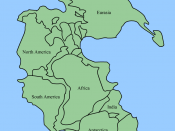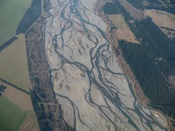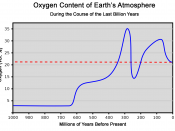The end Permian extinction event was the most devastating to organisms in Earth history. Some 70% of terrestrial species and 85% of marine species became extinct. This paper explores the two major hypotheses that have been suggested to explain this event.
One hypothesis that has been proffered to explain this mass extinction is the catastrophic asteroid impact hypothesis. There is evidence that an asteroid or comet could have impacted the Earth causing a sudden massive extinction event. The following is a brief description of the immediate consequences of an asteroid impact on Earth. As a comet or asteroid entered the Earth's atmosphere, the vaporized material would react over time and form small particles in the Earth's stratosphere (Knoll, Bambach, Canfield, and Grotzinger (1996). These dust particles would then block out the sun. The darkness would probably last a maximum of a few months. The darkness would limit photosynthesis effectively killing off many plants that could no longer produce enough life-sustaining energy.
It follows then that the herbivores that feed on these plants would also begin to die moving on right down the food chain.
The first piece of evidence for this hypothesis derives from limestone deposits that were discharged into the atmosphere. A discharge of large masses of limestone released enormous amounts of CO2 into the atmosphere when the deposits were freed from the ocean. This was postulated to have been caused by an impact by the asteroid (Retallack, Seyedolali, Krull, Holser, Ambers, and Kyte (1998). This would cause global warming for periods of several thousands of years. This warming effect is even worse because the asteroid would have had to hit limestone covered by water, so that a large amount of water would have vaporized. Water vapor acts as a strong greenhouse gas. The asteroid, during its travel...


